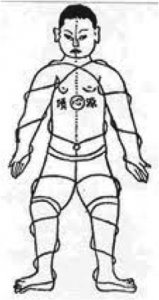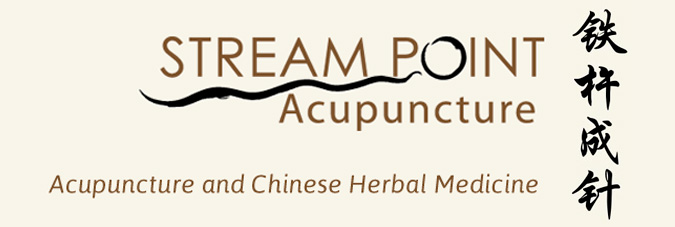 This week we present a unique blog brought to you by the combined efforts of two of our amazing instructors! In keeping with all things inflammation, these two lovely ladies impart some wisdom on how to utilize Qi Gong & Yoga to cope with inflammatory pains like arthritis.
This week we present a unique blog brought to you by the combined efforts of two of our amazing instructors! In keeping with all things inflammation, these two lovely ladies impart some wisdom on how to utilize Qi Gong & Yoga to cope with inflammatory pains like arthritis.
We’ll start with a bit on Qi Gong, a wonderful mindbody exercise, from Tonya Leger.
Nature’s creatures are producing evening symphonies, warm and inviting is the night, our gardens are full of the fruits of labor and gifts of rain….and the thickness of the day is a heavy, soggy, and steamy blanket!!! That’s not so nice. Our sinuses are congested, our joints are swollen, even our hormones are affected by the increase of moisture in the air. After all, environmental Qi, the food we eat, and how we use our bodymind attributes to a third of our constitution. The excess humidity seeps into our bodies creating a swampy environment for Qi and blood to circulate, hormones to regulate, and lymph to filtrate. A certain stress response activates and the body surely shows that stress in a multitude of ways. Must we endure the aching and smothering feeling as we drag ourselves through weeks of an insufferable damp heat?? No. No. No. There’s a Qi Gong for all of that!!!
 Qi Gong can provide great relief or prevent flare-ups of arthritis and other inflammatory conditions. When environmental conditions like humidity create imbalanced Qi, we can use our powerful minds, purifying breath, and gentle movements to restore harmony and health to various body systems. I offer a simple yet powerful Qigong to help restore your sense of wellness and vitality.
Qi Gong can provide great relief or prevent flare-ups of arthritis and other inflammatory conditions. When environmental conditions like humidity create imbalanced Qi, we can use our powerful minds, purifying breath, and gentle movements to restore harmony and health to various body systems. I offer a simple yet powerful Qigong to help restore your sense of wellness and vitality.
 Joint Mobilization: from standing position, feet parallel and shoulder width apart
Joint Mobilization: from standing position, feet parallel and shoulder width apart
- Begin by relaxing the entire body. Remain mindful that qi flows best through open muscles, joints, and tissues.
- Breath… and focus your mind on where your breath goes. The flow of Qi is enhanced, the quality of Qi is purified, and the specific benefit is best attained.
- Wiggle and gently stretch your toes, rise onto the ball of your feet and settle easily back onto your heels.
- Begin rotating the wrists, slowly, 9 times clockwise and 9 times counter-clockwise while visualizing yourself inhale cool, dry steam into the wrists, cooling and relieving them of turbid qi until they glow like a cool, white pearl.
- Continue slow, gentle wrist rotations, while shifting your focus and movement to the elbows. As your wrists rotate upward, do the “motion” of a bicep curl, however, keep your attention on rotation of the elbow joint. Inhale cool, dry steam into the elbows, cooling and relieving them of turbid qi until they glow like a cool, white pearl.
- As your wrists rotate outward, around, and down, exhale imagine that you are slowly pushing downward through deep, cool water. Continue making these outward circles
And now some thoughts inspired by our resident Yogi, Olivia Jones! Combat arthritis with your yoga practice for your mind and your body…
Are you tired of the fatigue, swelling, rigidity and join pain associated with arthritis? Or what about just everyday stiffness? I have one word for you: YOGA.
When people are hesitant to try yoga, the most common responses I hear are, “I’m not flexible,” or “There’s no way my joints can handle that.” So, before you default to either of those statements, continue reading with an open mind!
 In yoga, you (the student) met exactly where you are, so don’t fret! All poses — and I mean ALL — can be modified to accommodate stiff joints and reluctant bodies. And the best part is that it can be done without hindering the any of the benefits your yoga practice will provide…and there are SO many benefits with the practice of yoga. To name a few, the sequencing and meditation within a yoga practice works wonders at lowering blood pressure and cortisol levels as well as promoting strength, endurance and yes…flexibility. Iyengar yoga, in particular, is extremely beneficial to those living with arthritis due to its strong use of props. Iyengar yoga involves a slow paced, alignment focused practice where we learn to first adjust, then soften our bodies into each pose, embracing the openness. As I often tell my students, the longer you stay in a pose, the easier it becomes to surrender and to go even deeper.
In yoga, you (the student) met exactly where you are, so don’t fret! All poses — and I mean ALL — can be modified to accommodate stiff joints and reluctant bodies. And the best part is that it can be done without hindering the any of the benefits your yoga practice will provide…and there are SO many benefits with the practice of yoga. To name a few, the sequencing and meditation within a yoga practice works wonders at lowering blood pressure and cortisol levels as well as promoting strength, endurance and yes…flexibility. Iyengar yoga, in particular, is extremely beneficial to those living with arthritis due to its strong use of props. Iyengar yoga involves a slow paced, alignment focused practice where we learn to first adjust, then soften our bodies into each pose, embracing the openness. As I often tell my students, the longer you stay in a pose, the easier it becomes to surrender and to go even deeper.
Not quite ready to drag out the blocks, straps and blankets? Start with a heat building sequence to increase the circulation. Slow moving sun salutations partnered with even slower cat/cow warm-ups will help to loosen the joints before you choose to remain a little longer in each pose. Throughout the practice, really bring your attention to your breath. Allow the breath to initiate movement, taking your body exactly as deep as it needs to go. When lingering in a pose, let the breath partner with the sponda or pulsations of the pose. For example, expand with the inhale and extend with the exhale. Permit the breath to lead.
Not only is the body greatly improved by yoga, but also the mind. While a yogi will see physical improvements over time, the connection with the mind becomes even more profound. A yogi learns to change his or her relationship with all experiences, especially pain enabling them to react differently. Yoga awakens a whole new type of understanding within the individual. An awareness of the body and how it feels in the space around you will expose trigger activities. Ultimately, this can help decrease the discomfort associated with arthritis. Instead of resorting to frustration and pain, a yogi can incorporate the modifications of the asanas into everyday life. Take the practice off the mat.
Namaste Y’All!
Olivia Jones & Tonya Leger

